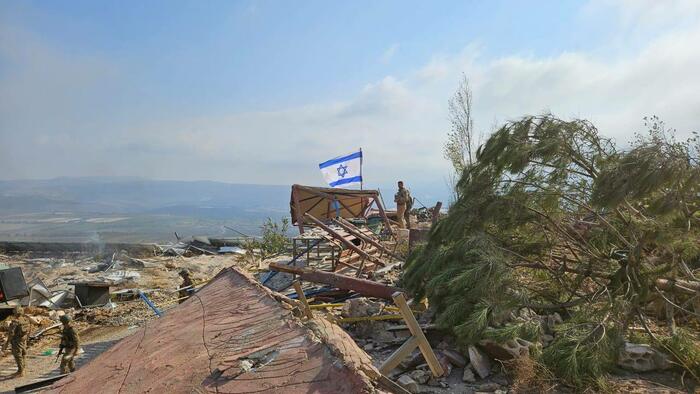This week, the Israeli Broadcasting Authority aired footage that showed Israeli Defense Forces (IDF) troops raising the Israeli flag on Lebanese territory, specifically in the village of Maroun el-Ras, following their military engagement with Hezbollah in southern Lebanon. The footage has prompted significant concern and speculation regarding Israel’s intentions in the region, especially as government officials originally characterized the ground invasion as limited and short-term. The act of planting the flag may imply a more prolonged occupation of parts of southern Lebanon, raising questions about Israel’s strategic goals and the potential for long-term military presence in the area.
Maroun el-Ras, located just a kilometer from the Israeli border, has considerable historical significance. The area was previously associated with Hezbollah and Iranian influences, featuring a site known as the “Iran Garden,” where Iranian officials had often visited and commemorated their alliance. This garden served as both a cultural monument and a strategic vantage point into Israel, drawing attention as a symbol of Hezbollah’s resistance against Israeli incursions during the 2006 Lebanon War. The site previously included various amenities and features that culturally and politically resonated with both Hezbollah supporters and Iranian representatives, further emphasizing the area’s importance in the context of regional tensions.
The implications of the IDF’s military actions extend beyond mere territorial control. According to Israeli Energy Minister Eli Cohen, the army has occupied Maroun el-Ras and targeted locations used by Hezbollah for launching anti-tank missiles against Israeli civilians. This admission underscores a possibly broader campaign aimed at significantly degrading Hezbollah’s military capabilities. The intentional destruction of the site known for its associations with Hezbollah leadership and Iranian presence marks a strategic blow to the militia and could symbolize Israel’s intent to reshape the power dynamics within Lebanon by disrupting Hezbollah’s symbolic legacy and operational infrastructure.
As the situation evolves, political leaders in Israel are issuing stark warnings to the Lebanese populace. Prime Minister Benjamin Netanyahu has called for Lebanese citizens to liberate their country from Hezbollah’s influence, threatening them with “destruction and suffering” similar to that witnessed in Gaza if they fail to act against the militant group. This rhetoric serves to galvanize public opinion within Israel while attempting to place the onus of conflict resolution on the Lebanese people. The insinuation is clear: unless Hezbollah’s grip on Lebanon is loosened, the consequences for the civilian population may be dire.
The presence of an Israeli Navy warship off the coast of southern Lebanon adds another layer of complexity to the unfolding situation. It signifies Israel’s ongoing military readiness and capability to engage in broader operations, should circumstances demand it. This positioning might be perceived as a threat or a deterrent against further escalation from Hezbollah or its allies, particularly Iran. As both sides navigate the intricate layers of military engagement and territorial claims, the potential for expanded conflict remains a persistent concern, especially given the current geopolitical landscape.
Ultimately, the recent developments in southern Lebanon exemplify the fragile nature of peace and security in the region. Israel’s military operations appear aimed at disrupting Hezbollah’s infrastructure and deterring future attacks, but the act of raising its flag also raises significant questions about the broader implications for regional stability and the potential for prolonged military involvement. As Israel seeks to enhance its security, the confrontation with Hezbollah risks entrenching divisions and igniting further conflict, illustrating the intricate balancing act that lies ahead for both Israel and Lebanon in the quest for lasting peace.

